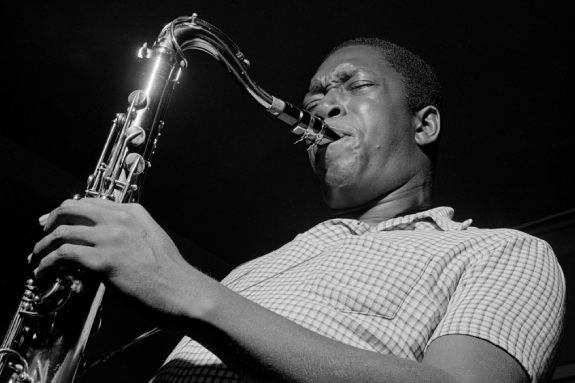John Coltrane, often referred to as “Trane,” is one of the most influential jazz musicians of all time. Known for his innovative approach to harmony and his ability to imbue his playing with deep emotional intensity, Coltrane’s body of work spans numerous phases and styles. His discography includes hard bop, modal jazz, and avant-garde explorations. Here are ten of his most remarkable and defining songs:
1. “Giant Steps” (1959)
From the album Giant Steps, this song is a landmark in Coltrane’s career and jazz music as a whole. Known for its complex chord changes, which later became known as “Coltrane changes,” the track showcases Coltrane’s technical prowess and improvisational brilliance. The breakneck tempo and intricate structure have made “Giant Steps” a rite of passage for jazz musicians.
2. “A Love Supreme: Part I – Acknowledgement” (1965)
Part of Coltrane’s spiritual opus, A Love Supreme, this piece marks a high point in his exploration of spiritual themes and modal jazz. The opening section, “Acknowledgement,” features a chant-like bassline and a famous four-note motif that Coltrane himself hums towards the end, symbolizing his deep devotion and quest for a higher plane of consciousness.
3. “My Favorite Things” (1961)
Coltrane’s transformation of the Rodgers and Hammerstein tune from The Sound of Music into a modal jazz masterpiece is a testament to his ability to reinterpret popular music in a profound way. The 13-minute version on the album My Favorite Things uses the soprano saxophone to great effect, making it one of his most accessible and enduring tracks.
4. “Naima” (1959)
Named after Coltrane’s first wife, Naima is a heartfelt ballad from the Giant Steps album. It is characterized by its poignant melody and rich harmonic texture. The piece stands out for its emotional depth and has become a jazz standard covered by countless artists.
5. “Blue Train” (1957)
The title track from Coltrane’s Blue Train album is a quintessential hard bop tune featuring a powerful, bluesy motif. This composition is notable for its strong sense of blues combined with complex harmonic elements, highlighting Coltrane’s skill as a composer and bandleader.
6. “Impressions” (1961)
A cornerstone of Coltrane’s live performances, Impressions is a high-energy piece that exemplifies his modal jazz phase. It’s built on a simple Dorian mode structure that allows for extended improvisation, showcasing Coltrane’s relentless exploration of musical possibilities.
7. “Cousin Mary” (1959)
From the album Giant Steps, Cousin Mary is a blues-inflected piece named after Coltrane’s cousin. The track blends blues and bebop, and its relatively simple form serves as a canvas for Coltrane’s dynamic improvisation.
8. “Equinox” (1960)
Featured on the album Coltrane’s Sound, Equinox is a moody, minor blues that reflects Coltrane’s deep connection to his African heritage and spiritual roots. Its meditative quality and haunting melody make it a standout piece in his catalog.
9. “Resolution” (1965)
The second part of A Love Supreme, Resolution continues the suite’s spiritual journey with a more intense and driving feel. This piece showcases Coltrane’s ability to convey profound emotional and spiritual narratives through his playing, with an impassioned and dynamic solo.
10. “Alabama” (1963)
Inspired by the 1963 bombing of the 16th Street Baptist Church in Birmingham, Alabama, this track is a powerful musical response to the civil rights struggle. Coltrane’s Alabama is somber and reflective, capturing the sorrow and resilience of the African American community through a deeply moving performance.
Conclusion
John Coltrane’s music is a journey through the evolution of jazz in the 20th century. His innovative approach to harmony, rhythm, and form not only pushed the boundaries of the genre but also left a profound impact on the world of music. These ten songs highlight the diverse phases of his career, from the complex harmonic language of “Giant Steps” to the spiritual profundity of A Love Supreme, each reflecting his continuous quest for deeper expression and understanding through sound. Coltrane’s legacy endures through his recordings, which continue to inspire musicians and listeners alike.


No responses yet